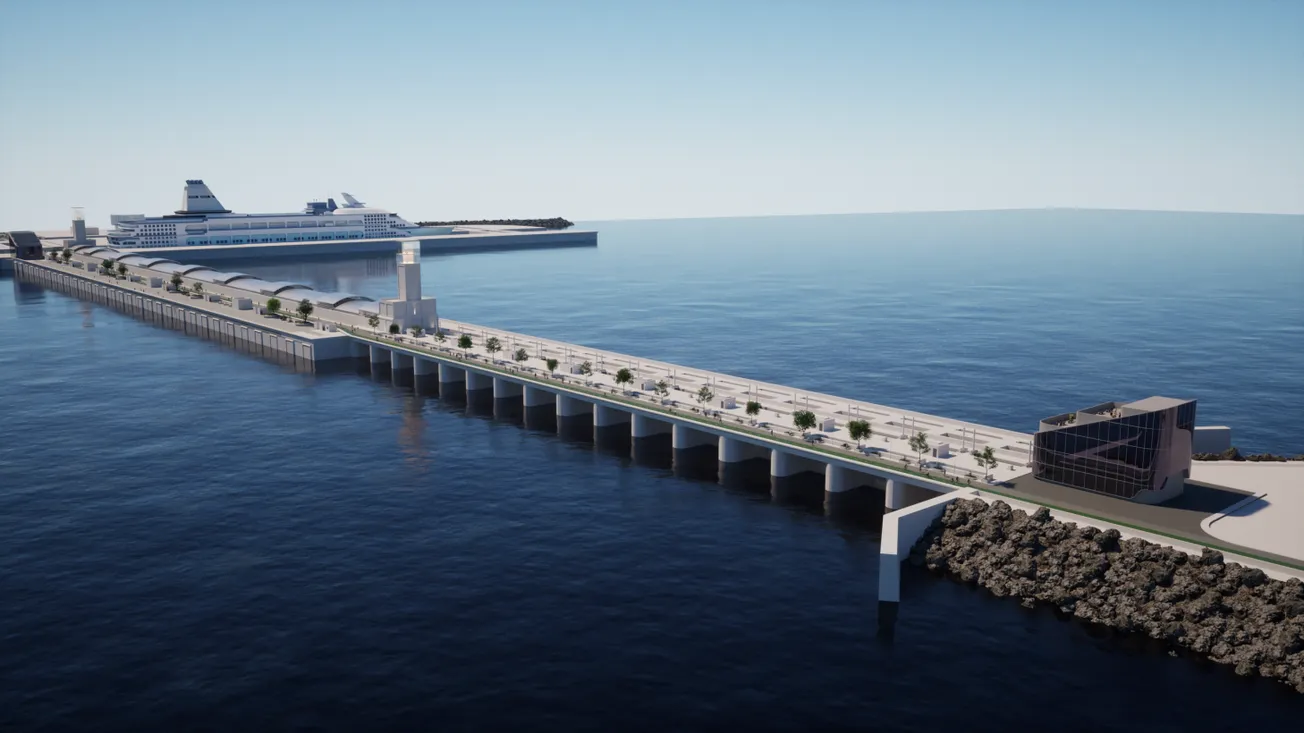In 2017, Steve Rotheram vowed to build a barrage across the Mersey. Where is it?

The political challenges of building the biggest tidal energy dam in the world
Dear readers — it’s been eight years since metro mayor Steve Rotheram first pledged to build a barrage across the Mersey as part of his election campaign. If built, it would be the biggest tidal barrage in the world, generating the equivalent of two-thirds of Liverpool’s 2017 electricity requirement, and powering “over a million homes”, according to press releases from the Combined Authority.
So far, over £7 million has been spent on research and surveys, and a recent public consultation found 84% of people are in favour of it being built. But, we’re told, the mayor’s team still haven’t worked out where exactly it will be built. So is the project a vast money pit that will continue to eat up millions with nothing to show? Or is it, actually, a pretty good idea?
Several of our readers got in touch with questions about the Mersey Barrage, so in today’s Answers in The Post, Abi speaks to experts and reports back. It’s all part of our mission to show you what’s really going on in Merseyside — and we’re hugely grateful to the 1,850 supporters who are backing us. If you’d like to join them (and read today’s piece in full) click the button below.
And if you’d like to submit your own question for Answers in The Post, click this button, too.
But first, your Post briefing.
Your Post briefing
The chancellor Rachel Reeves has approved £15 billion for transport infrastructure projects across the country, including £1.6 billion for the Liverpool City Region (LCR). Although reported as a “spending spree”, this only matches the £1.6 billion allocated to the LCR under the previous Conservative government in October 2023. The funding will go towards a rapid transit system — said to be similar to the “Glider” system in Belfast — incorporating Liverpool John Lennon Airport, Everton’s new Hill Dickinson stadium and Anfield, all first announced by LCR’s Combined Authority in August last year. A new fleet of buses will also be rolled out in St Helens and the Wirral. “This is the biggest ever investment in our region’s transport,” said metro mayor Steve Rotheram, “and a vote of confidence in the ambition we’ve shown.” Meanwhile, South Yorkshire will receive £1.5 billion to renew its tram network, the North East £1.8 billion to extend the Newcastle-to-Sunderland Metro, and the East Midlands £2 billion to overhaul its transport infrastructure.
QUARRY has found a new home. In November, The Post reported that the independent music and arts club had to move out of its Love Lane home after planning permission to turn the venue into a luxury apartment complex was approved. Now, the CIC behind the project have announced QUARRY will relocate to 45 Hardman Street, which some readers may know better as the former home of the legendary music venue Magnet. Compared with Love Lane, QUARRY’s new home will have a better capacity and a city centre location, not to mention a purpose-built basement ideal for live performances. “We recognise that this iconic site is steeped in history,” said the team in a joint statement. “We aim to acknowledge what has come before us while also adding something new.” The new QUARRY is expected to open in autumn this year.
And a Wirral horse charity is facing closure. Horse Sense, which cares for abused, neglected, and geriatric horses and ponies rents their premises in Thornton Hough from Leverhulme Estates. Amy Pirie, who founded the charity in 2009, claims that a dispute with Leverhulme over the responsibility for a £22,000 water bill has resulted in the property management company beginning legal proceedings against Horse Sense. The charity currently does not have enough cash to instruct their own solicitor. One of the volunteers at Horse Sense has begun a crowdfunding campaign to raise the necessary money. The Post has contacted Leverhulme Estates for comment.
In today’s Answers in The Post, we dig into metro mayor Steve Rotheram’s flagship project: the Mersey Barrage. How much has it cost the city region so far? And how likely is it to materialise?
What exactly is it?
The Mersey Barrage is a proposed scheme to build a tidal barrage across the Mersey Estuary to generate power. The idea was first touted in 1984, and in 2006 a study by Peel Holdings identified the River Mersey as a potential site to construct a barrage. However, in 2011 Peel abandoned the scheme, citing small profit margins as a barrier.
As part of Steve Rotheram’s 2017 metro mayor election campaign, he promised to reinstate plans for the Mersey Barrage, which – if built – would be the largest in the world.
How does it work?
A concrete dam is built across a body of water, like the Mersey. When the tide is high, water flows into the bay behind the dam to be stored. When the tide goes out, that water is released from the dam, which powers turbines and generates electricity.
This technology has been used for decades, and as part of the Mersey Barrage project the Combined Authority has partnered with South Korea’s Sihwa Lake Tidal Power Station — which uses the same technology — to carry out "reciprocal visits and information sharing". But perhaps a better example is the La Rance Tidal Power Station in Brittany, which has a barrage of a close size and function to what is being considered for the Mersey.
The La Rance barrage was built in 1966, at a cost of £75 million. Now, it has fully recovered its building costs and – according to a 2016 study – produces the cheapest energy in Europe. The hope is the Mersey could do the same. In press releases for the Mersey Barrage, the Combined Authority claim it could produce the equivalent of two-thirds of Liverpool’s 2017 electricity requirement, and power “over a million homes”.

Latest
The men who raised the flags
On the Wirral, public trust goes up in smoke
Gerard Woodhouse pleads guilty to harassment. “Jail him,” says his victim
The tide is turning
In 2017, Steve Rotheram vowed to build a barrage across the Mersey. Where is it?
The political challenges of building the biggest tidal energy dam in the world